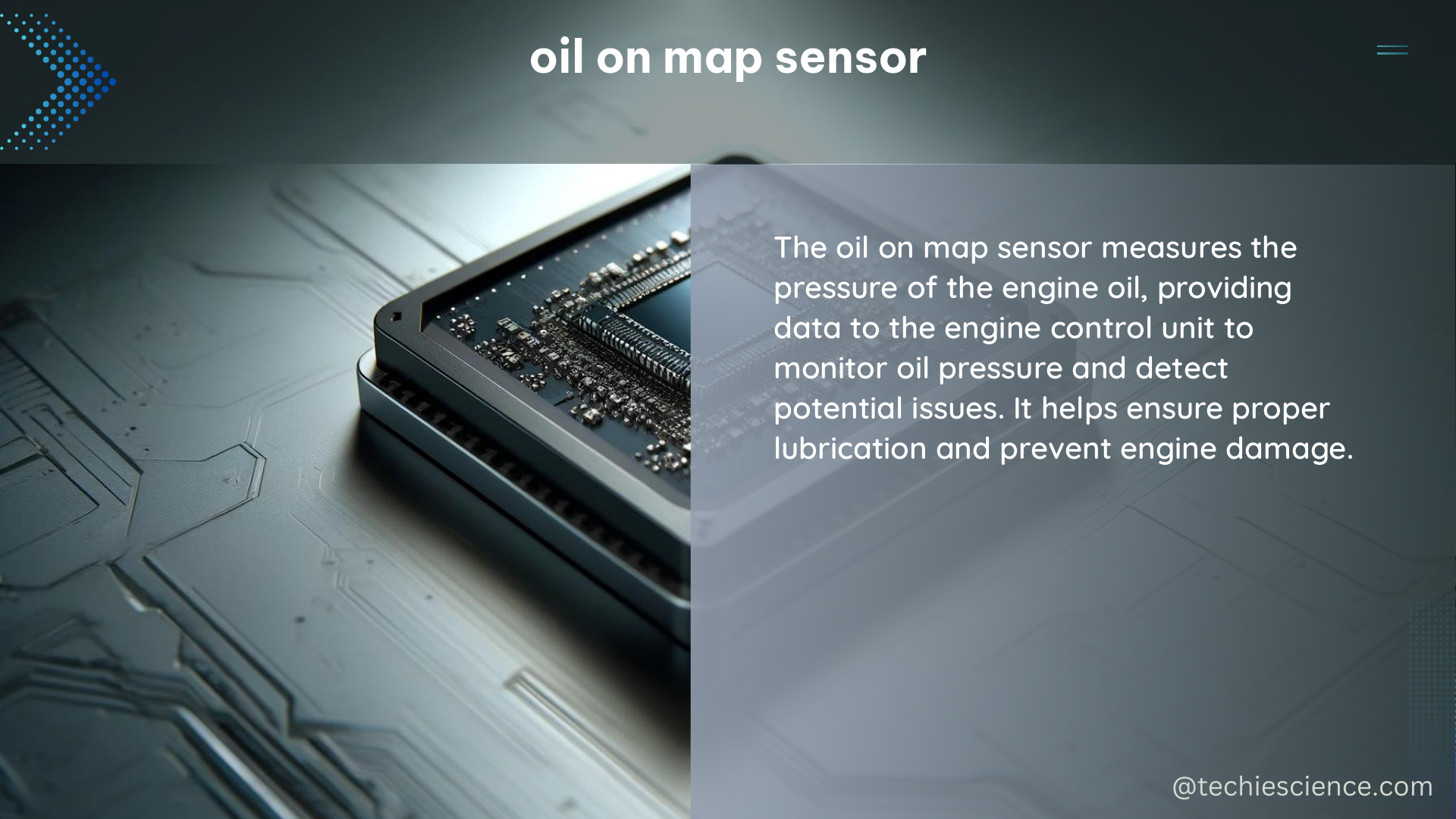The Manifold Absolute Pressure (MAP) sensor is a critical component in modern vehicles, responsible for measuring the pressure inside the intake manifold. This information is crucial for the engine control system to determine the engine load and adjust the fuel injection and ignition accordingly. However, when the MAP sensor becomes contaminated with oil, it can lead to various performance issues and even sensor failure.
Understanding the Role of the MAP Sensor
The MAP sensor is a key component of the engine management system, particularly in the 1996 Chevrolet Tahoe with a 5.7L Vortec engine. The sensor’s output should remain relatively stable when the RPM is steady, with minor variations due to the overlapping of vacuum pulses in the intake strokes of the engine’s cylinders. However, if there are wild swings in the MAP sensor reading, it could indicate issues with intake valve sealing.
The stock MAP sensor part number for this vehicle is ACDELCO 213796. Before testing the MAP sensor, it’s essential to check for simple issues such as loose spark plug wires or damaged vacuum lines, as these can cause similar symptoms and throw a code 33.
Factors Affecting MAP Sensor Readings

MAP sensor readings can vary based on several factors, including engine load, RPM, and atmospheric pressure. For instance, there may be a variance of around 1 inHg or 3 kPa when idling in drive vs. park, due to the increased electrical load and differences in engine mechanical integrity. Additionally, elevation can also affect MAP sensor readings, with higher elevations resulting in lower readings.
It’s important to note that MAP sensor readings should be consistent, with any inconsistency potentially causing problems. For example, a MAP sensor reading of 82 kPa at one point and 90 kPa at another would be problematic, as it indicates inconsistency in the sensor readings.
MAP Sensor Calibration and Consistency
MAP sensors do not have to be perfectly calibrated, but as long as the numbers are consistent, the actual reading does not matter. However, if the real barometric pressure stays at a certain level and the MAP sensor reading fluctuates, it could indicate an issue with the sensor.
MAP sensor calibration can vary between individual sensors, with some sensors reading slightly lower or higher than others. This variation is normal and should not affect the performance of the engine management system as long as the readings are consistent.
Oil Contamination and MAP Sensor Failure
MAP sensors can become contaminated with oil, especially if the intake filter oil is not properly filtered. This can cause the sensor to fail, as seen in a BMW Mini with an intake filter oil contamination issue.
The oil contamination can lead to the following issues:
- Inconsistent MAP sensor readings: The oil can interfere with the sensor’s ability to accurately measure the pressure, leading to fluctuations in the readings.
- Sensor failure: Prolonged exposure to oil can damage the internal components of the MAP sensor, causing it to fail completely.
- Engine performance issues: Inaccurate MAP sensor readings can cause the engine control system to make incorrect adjustments to the fuel injection and ignition, leading to poor engine performance, reduced fuel efficiency, and even engine damage.
Troubleshooting and Maintenance
To prevent and address oil contamination issues with the MAP sensor, consider the following troubleshooting and maintenance steps:
- Inspect the intake filter and replace it if necessary to ensure proper filtration of the intake air.
- Check the vacuum lines and connections for any leaks or damage that could allow oil to enter the intake system.
- Perform a thorough cleaning of the MAP sensor and the surrounding area to remove any accumulated oil or debris.
- Consider upgrading to a high-quality, oil-resistant MAP sensor if the issue persists or is a common problem with your vehicle model.
- Regularly monitor the MAP sensor readings and address any inconsistencies or fluctuations promptly to prevent further damage.
By understanding the role of the MAP sensor, the factors that can affect its readings, and the potential issues caused by oil contamination, you can effectively troubleshoot and maintain your vehicle’s engine management system for optimal performance and longevity.
References:
- Mechanic’s StackExchange – MAP Sensor weird readings
- North American Motoring – Manifold Pressure Sensor failure -Filter oil contamination?
- MiataTurbo.net – MSPNP MAP sensor calibration??
- F150Forum – MAP Sensor Oily. Normal?

The lambdageeks.com Core SME Team is a group of experienced subject matter experts from diverse scientific and technical fields including Physics, Chemistry, Technology,Electronics & Electrical Engineering, Automotive, Mechanical Engineering. Our team collaborates to create high-quality, well-researched articles on a wide range of science and technology topics for the lambdageeks.com website.
All Our Senior SME are having more than 7 Years of experience in the respective fields . They are either Working Industry Professionals or assocaited With different Universities. Refer Our Authors Page to get to know About our Core SMEs.